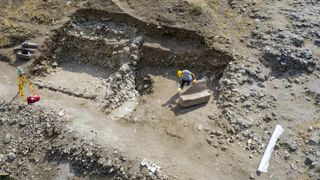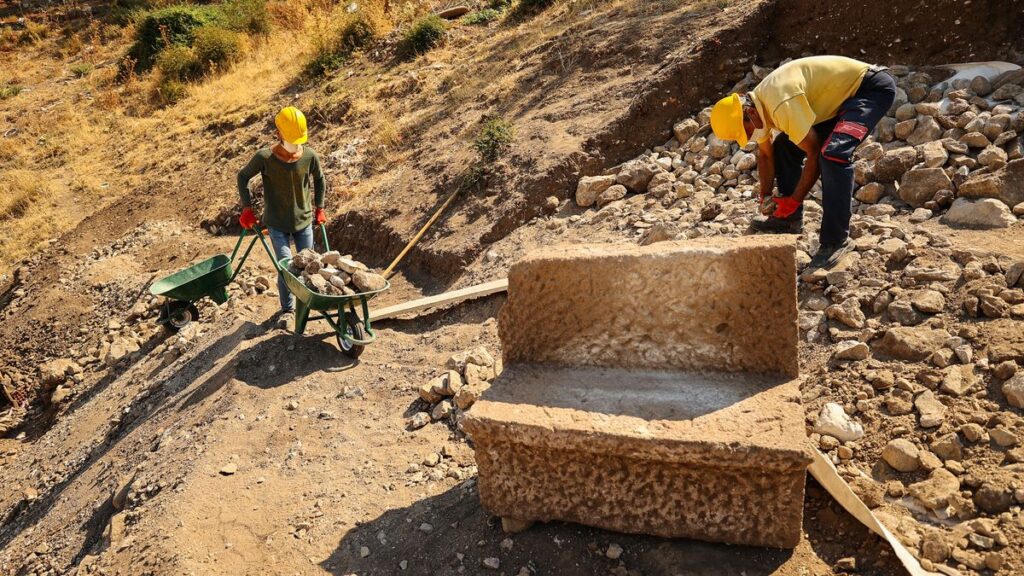Archaeologists in western Turkey have discovered what amounts to an 1,800-year-old set of “boxes” in a huge Roman stadium.
While excavating the ancient Pergamon Amphitheater, a huge amphitheater modeled after the Roman Colosseum, researchers discovered two seating blocks with inscriptions on the east side of the arena, according to a blog post from the TransPergMikro (Transformation of the Pergamon Microregion) excavation project funded by the German Research Foundation.
People from all walks of life attended events at the arena, but the VIP inscriptions suggest that elite families “had private seats in special sections where their names were inscribed,” Felix Pirson, director of the Istanbul branch of the German Archaeological Institute, one of several German and Turkish organizations conducting the excavations, told Turkey’s state news agency Anadolu.
Related: Image Gallery: Ancient Roman Martial Arts
The Pergamon amphitheater is known for its unique structure. According to Transperg Micro, it was built “between the slope of the mountain and the western slope of the hill” when the area was part of the Roman Empire. Transperg Micro points out that “the building was built between two slopes separated by a stream flowing through an arched channel, which suggests that naumachia (naval battles) and water sports were held in the amphitheater.”
Gladiator fights also took place in the arena in the 2nd century, drawing spectators, Pilson said, and it could have accommodated at least 25,000 spectators, and possibly as many as 50,000, according to Anadolu Agency.

A drone photograph shows men excavating one of two “boxes” discovered in the amphitheater of the ancient city of Pergamon. (Image credit: Mehmet Emin Menguarulslan/Anadolu Agency via Getty Images)
It is currently one of the best-preserved amphitheaters in Asia Minor, but no detailed or accurate studies have been published on it until now, which is why excavations are currently being carried out by archaeologists from Transperg Micro, the German Archaeological Institute and the Institute of Architecture at the Technical University of Berlin, with permission from the Turkish Ministry of Culture and Tourism.

Flone footage shows the “Box Seat” excavation at Pergamon in the Bergama district of Izmir, Turkey, on September 22, 2021. (Image credit: Mehmet Emin Menguarulslan/Anadolu Agency via Getty Images)
Their efforts have paid off: the “box seats” had never been recorded before. “This discovery confirms that carved seating blocks for the privileged were not only found at Ima Cavea, but also at other places in the city,” said the archaeologist. [lower seats] “Similar discoveries were made on higher levels,” the archaeologists wrote in the post.
“Another thing that caught our attention was that the Latin names were written in Greek letters,” Pilson said, “which leads us to believe that people from Italy had a special place in the Pergamon amphitheater.”
The team excavated the seat and analyzed it using 3D photogrammetry, a technique that takes detailed photos of an object multiple times and from different angles to create a precise 3D digital image.
The blocks are now on display in the courtyard of the Red Basilica, a ruined temple of ancient Pergamon, in the Turkish town of Bergama.
Originally published in Live Science.


